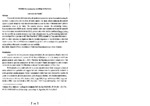Please use this identifier to cite or link to this item:
http://www.alice.cnptia.embrapa.br/alice/handle/doc/577655| Title: | Pesticide bioconcentration modelling for fruit trees. |
| Authors: | PARAIBA, L. C.  |
| Affiliation: | LOURIVAL COSTA PARAIBA, CNPMA. |
| Date Issued: | 2009 |
| Citation: | In: FRUIT, NUT AND VEGETABLE PRODUCTION ENGINEERING SYMPOSIUM, 8., 2009, Concepción, Chile. Frutic Chile 2009. Proceedings... Chillán: Progap, 2009. |
| Pages: | p. 532-544 |
| Description: | The model presented allows simulating the pesticide concentration in fruit trees and estimating the pesticide bioconcentration factor in fruits of woody species. The model allows estimating the pesticide uptake by plants through the water transpiration stream and also the time in which maximum pesticide concentration occur in the fruits. The equation proposed presents the relationships between bioconcentration factor (BCF) and the following variables: plant water transpiration volume (Q), pesticide transpiration stream concentration factor (TSCF), pesticide stem-water partition coefficient (KWood,w), stem dry biomass (M) and pesticide dissipation rate in the soil-plant system (kEGS). The modeling started and was developed from a previous model ?Fruit Tree Model? (FTM), reported by Trapp and collaborators in 2003, to which was added the hypothesis that the pesticide degradation in the soil follows a first order kinetic equation. The model fitness was evaluated through the sensitivity analysis of the pesticide BCF values in fruits with respect to the model entry data variability. |
| Thesagro: | Agrotóxico Modelo Matemático |
| Type of Material: | Artigo em anais e proceedings |
| Access: | openAccess |
| Appears in Collections: | Artigo em anais de congresso (CNPMA)  |
Files in This Item:
| File | Description | Size | Format | |
|---|---|---|---|---|
| 2009AA069.pdf | 6,87 MB | Adobe PDF |  View/Open |









